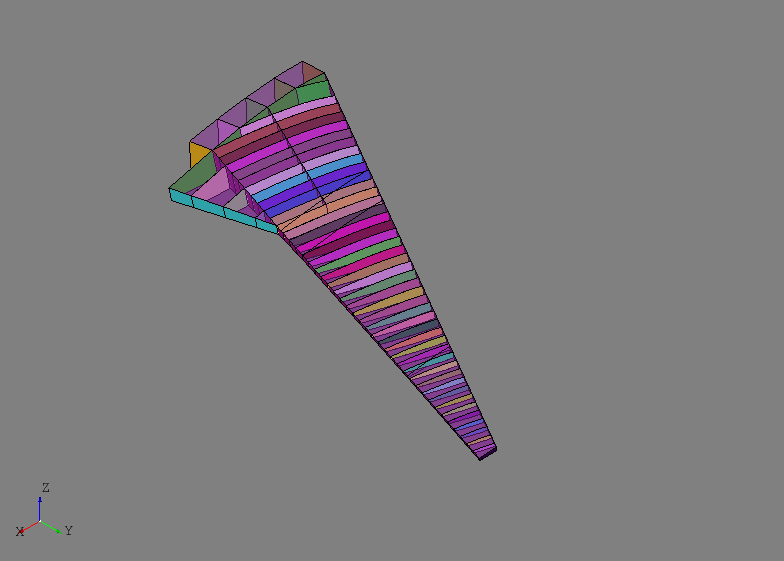AFEM is a "fit-for-purpose" engineering development toolkit designed to support the use of high-order structural analysis during the early phases of aircraft conceptual design. As a development toolkit, it provides the engineer with a flexible, modular, and extensible library of components and tools to rapidly build a useful structural model. It is not an end-user GUI application, but rather a library enabling engineers to rapidly build their own application specific tools and processes, encoding their own design rules and best practices along the way.
Although AFEM targets airframe design and analysis applications, really only
the afem.structure and afem.oml packages directly support that cause.
All the other packages provide a more general and "Pythonic" set of entities
and tools that could potentially be used to develop applications in other
disciplines and/or domains.
The AFEM core technology stack includes:
-
Python: The Python programming language enables rapid development and integration with other systems.
-
OpenCASCADE: This mature library provides advanced geometric modeling and CAD functionality and is under active development.
-
Netgen: This library enables advanced meshing capabilities including 3-D tetrahedral and 2-D unstructured quad-dominated surface meshing.
-
Salome Platform: The core meshing library from this open source application serves as the central component for AFEM's mesh generation capabilities.
-
pyOCCT: This open source project provides Python bindings to the OpenCASCADE and Salome Platform meshing libraries.
AFEM is currently only supported for Windows 64-bit Python 3.5 and 3.6. Cross-platform support is dependent upon prerequisites such as pyOCCT. Anaconda Python or Miniconda is recommended for installation and regular use since many of the prerequisites are available via the Anaconda Cloud.
It is recommended that a designated environment be created and used for AFEM. An example of creating this environment for Anaconda Python within an Anaconda command prompt is:
conda create -n afem python=3.5
This will create an environment named "afem" with Python 3.5. Make sure this environment is active when using AFEM. For Anaconda Python, activating this environment may look like:
activate afem
within an Anaconda command prompt.
The pyOCCT package developed by Laughlin Research should now be installed. For supported platforms, installing pyOCCT can be done by:
conda install -c laughlinresearch -c conda-forge pyocct
Other dependencies such as NumPy and SciPy can be installed as needed using the conda package manager:
conda install numpy scipy
or pip:
pip install numpy scipy
A minimal graphical user interface requires the wxPython package which can be installed by:
conda install -c conda-forge wxpython
Be sure to activate the designed AFEM environment before installation.
AFEM is a pure Python package and can be installed using the command:
python setup.py develop
within the AFEM root folder. The develop option links to the source code
at runtime so changes in the source are reflected in any programs using AFEM.
The regular installation command:
python setup.py install
can be used to actually install the AFEM package into the Python site-packages directory.
Installation files can be cleaned by:
conda clean -a
The documentation can be built from sources using sphinx. Install sphinx and sphinx_rtd_theme in the desired conda environment by:
conda install sphinx sphinx_rtd_theme
Then navigate to the docs/ folder and run:
make html
This should build html documentation in a docs/build/html folder. Open the index.html file with a web browser.
The best way to get started is to examine and run the files in the examples/ folder. Running the script:
python structure_wingbox.py
should generate an image similar to the one shown below. Remember to make sure the appropriate environment is active when using AFEM is applicable.
AFEM is under active development and should be considered a work in progress. The focus is currently:
- Adding (and completing) examples
- Simplifying the rules for meshing parts
- Moving doctests to unit tests and adding more test
- Cross-platform support for prerequisites like pyOCCT
